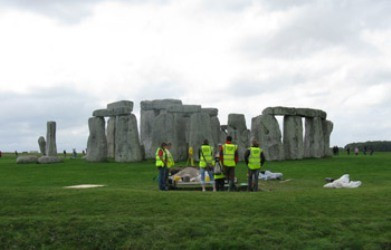Stonehenge Built To Unify Ancient Britons, Say Researchers

An international team of researchers has found that the Stonehenge was built as a monument to unify ancient Britons after a long period of conflict and regional differences between eastern and western Britain.
Researchers also found that Stonehenge stones are thought to have symbolised the ancestors of different groups of earliest farming communities in Britain, with some stones coming from southern England and others from west Wales.
Researchers found the historical significance of the Stonehenge while not only just studying the Stonehenge landscape but also analysing social and economic context of the monument. They studied the monument for the past 10 years.
The team has found that its solstice-aligned Avenue sits upon a series of natural landforms that, by chance, form an axis between the directions of midsummer sunrise and midwinter sunset.
"When we stumbled across this extraordinary natural arrangement of the sun's path being marked in the land, we realized that prehistoric people selected this place to build Stonehenge because of its pre-ordained significance. This might explain why there are eight monuments in the Stonehenge area with solstitial alignments, a number unmatched anywhere else. Perhaps they saw this place as the centre of the world," said Professor Mike Parker Pearson, researcher at the University of Sheffield, in a statement.
Even though many people across the world visit the Stonehenge at the time of summer solstice, to just to witness the stunning sunrise, researchers found that the Stonehenge was built to witness the winter solstice. They claim that winter solstice was the more significant time of the year when Stonehenge was built 5,000-4,500 years ago.
"We can tell from ageing of the pig teeth that higher quantities of pork were eaten during midwinter at the nearby settlement of Durrington Walls, and most of the monuments in the Stonehenge area are aligned on sunrise and sunset at midwinter rather than midsummer. At Stonehenge itself, the principal axis appears to be in the opposite direction to midsummer sunrise, towards midsummer sunset, framed by the monument's largest stone setting, the great trilithon," Professor Parker Pearson said
Earlier, researchers believed that the great stone circle was used as a prehistoric observatory, a sun temple, a place of healing, and a temple of the ancient druids. Now researchers have found that stonehedge was built to unify people of Britain.
© Copyright IBTimes 2025. All rights reserved.





















